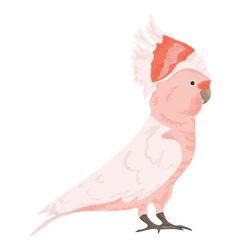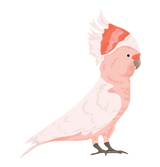ISSUE 33: THE ALLURE OF MOROCCAN BERBER RUGS
Step into the enchanting world of Moroccan Berber rugs, where tradition meets artistry, and each weave tells a story. Renowned for their vibrant colors, intricate patterns, and remarkable craftsmanship, these rugs are more than just decor—they are a celebration of culture and heritage. In this guide, we’ll take you on a journey to uncover the allure of authentic Berber rugs, exploring their rich history and the skilled artisans behind the scenes. Whether you’re a seasoned collector or a curious newcomer, understanding the nuances of these stunning textiles will not only enhance your space but also connect you with the heart of Morocco itself. Discover how to spot genuine pieces, appreciate their unique styles, and incorporate them into your home decor, enriching your living environment with a touch of timeless elegance. Join us and dive deep into the captivating world of Moroccan Berber rugs, where every thread is woven with passion and creativity.
Berber rugs hold a venerable place within Moroccan culture, stretching back centuries and deeply entwined with the history of the Berber people, who are indigenous to North Africa. These rugs are more than mere decorative items; they are cultural artifacts that encapsulate the traditions, stories, and lives of the Berber tribes. The craft of rug weaving has been passed down through generations, often from mother to daughter, ensuring that the techniques and patterns remain preserved across time. Each rug is a testament to the artisan’s skill and the community's heritage, reflecting the collective memory and identity of the Berber people.
The significance of Berber rugs extends beyond their aesthetic appeal. Historically, they were used for various practical purposes within the home, including as bedding, seating, and even as burial shrouds. The designs and motifs woven into the rugs often carry symbolic meanings, representing fertility, protection, and the natural environment. These symbols are not merely decorative but serve as markers of cultural identity and continuity. For instance, diamond shapes frequently appear in the patterns, symbolizing protection from evil spirits, while other motifs may represent fertility or the endless journey of life.
In the broader context of Moroccan culture, Berber rugs are celebrated for their unique contribution to the country’s artistic heritage. They are a source of national pride and a living example of Morocco's rich tapestry of influences, which includes Arab, Berber, and European elements. The rugs are not only cherished within Morocco but have also gained international acclaim, becoming sought-after items in global markets. Their intricate designs and handcrafted quality make them valuable cultural ambassadors, introducing the world to the beauty and depth of Berber art and tradition.
Berber rugs come in a variety of types, each with distinct characteristics that reflect the specific region and tribe where they were made. One of the most well-known types is the Beni Ourain rug, originating from the Beni Ourain tribes in the Atlas Mountains. These rugs are typically made from natural, undyed wool and feature a minimalist design with geometric patterns in black or brown on a cream background. The simplicity and elegance of Beni Ourain rugs have made them particularly popular in contemporary interior design.
Another notable type is the Azilal rug, named after the Azilal province in the central High Atlas Mountains. Unlike the Beni Ourain rugs, Azilal rugs are known for their vibrant colors and more expressive, abstract designs. They often incorporate a mix of natural wool and cotton, with patterns that can include anything from traditional Berber symbols to more whimsical, freeform shapes. The use of bold colors and creative designs makes Azilal rugs a favorite for those looking to add a lively touch to their home decor.
The third major type is the Boucherouite rug, which is a relatively recent addition to the Berber rug tradition. Originating from the necessity to use available materials, Boucherouite rugs are made from recycled textiles, such as old clothes and fabric scraps. This results in highly colorful and eclectic patterns, making each rug a unique piece of art. These rugs are particularly valued for their sustainability and the innovative use of materials, combining traditional weaving techniques with modern-day creativity. They are perfect for those who appreciate eco-friendly decor with a vibrant and unconventional flair.
The creation of an authentic Berber rug is a labor-intensive process that requires a high level of skill and experience. Each rug begins with the careful selection of materials, primarily wool, which is often sourced from local sheep. The quality of the wool is paramount, as it affects the rug's texture, durability, and overall appearance. The wool is typically hand-spun, a process that ensures a more robust and longer-lasting fiber compared to machine-spun wool. This initial step sets the stage for the remarkable craftsmanship that follows.
Weaving a Berber rug involves a traditional loom, where artisans meticulously work thread by thread to create the intricate patterns and designs. This process can take weeks or even months, depending on the size and complexity of the rug. The weavers often work without a written pattern, relying instead on their memory and creativity to guide the design. This improvisational approach means that no two Berber rugs are exactly alike, even if they share similar motifs. Each rug is a unique expression of the weaver's artistry and cultural heritage.
The finishing touches on a Berber rug are equally important. After the weaving is complete, the rug undergoes a series of treatments to enhance its texture and color. This may include washing the rug in natural springs to soften the fibers and bring out the natural luster of the wool. Some rugs are also brushed to give them a plush, velvety feel. The final product is a masterpiece of craftsmanship, combining traditional techniques with the weaver's personal touch. The result is a rug that not only looks beautiful but also carries the spirit and history of the Berber people.
Identifying a genuine Moroccan Berber rug requires an understanding of several key characteristics that set these rugs apart from imitations. One of the most important aspects to examine is the material. Authentic Berber rugs are typically made from high-quality, hand-spun wool. The wool should feel soft yet sturdy, with a natural sheen that synthetic fibers lack. Additionally, the presence of slight irregularities in the yarn is a good sign, as it indicates that the wool was hand-spun rather than machine-processed.
Another crucial factor is the craftsmanship. Genuine Berber rugs are handwoven, and this manual process results in slight variations in the weave that are not present in machine-made rugs. Examine the back of the rug for inconsistencies in the knots or weaving pattern, which signal that the rug was made by hand. The designs themselves can also offer clues; authentic Berber rugs often feature traditional motifs and symbols that have cultural significance. These designs are usually geometric and asymmetrical, reflecting the weaver's creativity and the improvisational nature of the craft.
The use of natural dyes and materials is a hallmark of authentic Berber rugs, deeply rooted in the traditional practices of the Berber people. Natural dyes are sourced from a variety of plants, minerals, and insects, each contributing to the rich palette of colors found in these rugs. For instance, indigo plants provide a deep blue hue, while madder root yields a range of reds. Yellow can be obtained from saffron or pomegranate skins, and various shades of brown and black are derived from walnut shells and iron oxide. These natural dyes not only offer vibrant and lasting colors but also ensure that each rug has a unique and organic quality.
The process of dyeing the wool is as meticulous as the weaving itself. Artisans often prepare the dyes by boiling the natural materials to extract the pigments, a process that can take several hours. The wool is then soaked in the dye mixture, sometimes for days, to achieve the desired intensity of color. This traditional dyeing method not only enriches the wool with deep, nuanced colors but also ensures that the dyes are absorbed evenly, resulting in a harmonious blend of hues. The use of natural dyes is a testament to the Berber weavers' deep understanding of their environment and their ability to harness its resources creatively.
In addition to natural dyes, the materials used in Berber rugs play a significant role in their quality and authenticity. Sheep's wool is the primary material, prized for its durability, warmth, and natural luster. The wool is often hand-spun, a process that enhances its strength and texture. Some rugs also incorporate cotton or camel hair, adding different textures and properties to the final product. The combination of these natural materials and traditional dyeing techniques results in a rug that is not only beautiful but also eco-friendly and sustainable. This commitment to natural materials and dyes underscores the Berber weavers' respect for their heritage and their environment, making each rug a true work of art.
Incorporating a Berber rug into your home decor is an excellent way to add a touch of elegance, history, and cultural richness to your living space. These rugs are versatile and can complement a wide range of interior design styles, from modern minimalist to bohemian chic. One of the most popular ways to use a Berber rug is as a statement piece in the living room. Placing a Beni Ourain rug with its distinctive geometric patterns and neutral colors can create a striking focal point that ties the room together. Pair it with contemporary furniture and decor to achieve a balanced and sophisticated look.
For those who prefer a more eclectic or vibrant aesthetic, Azilal or Boucherouite rugs are perfect choices. Their bold colors and dynamic patterns can add a lively and artistic touch to any room. Consider using these rugs in areas where you want to create a sense of energy and creativity, such as a home office, a reading nook, or a children's playroom. The key to successfully incorporating these rugs is to allow them to stand out while complementing the overall color scheme and design of the space. Mixing and matching different textures and materials can also enhance the visual interest and depth of the room.
Berber rugs are not limited to floor coverings; they can also be used in a variety of creative ways throughout your home. For example, you can hang a smaller Berber rug on the wall as a piece of textile art, adding texture and warmth to the room. This is particularly effective in spaces with high ceilings or large, empty walls. Another option is to drape a Berber rug over a sofa or bed, creating a cozy and inviting atmosphere. This versatile approach allows you to showcase the rug's intricate designs and craftsmanship while adding a layer of comfort and style to your home decor.
Proper care and maintenance are essential to preserve the beauty and longevity of your Berber rug. These rugs are crafted with great skill and natural materials, so taking the time to care for them will ensure they remain a cherished part of your home for years to come. Regular vacuuming is the first step in maintaining your Berber rug. Use a vacuum cleaner without a beater bar to gently remove dirt and debris from the surface. Vacuum in the direction of the weave to avoid damaging the fibers. For areas with heavy foot traffic, consider rotating the rug periodically to ensure even wear.
In addition to regular vacuuming, it's important to address spills and stains promptly to prevent permanent damage. If a spill occurs, blot the area immediately with a clean, dry cloth to absorb as much liquid as possible. Avoid rubbing the spill, as this can push the substance deeper into the fibers. For stubborn stains, a mixture of mild soap and water can be used. Gently dab the stained area with the soapy solution, then rinse with clean water and blot dry. It's crucial to use a mild, pH-neutral soap to avoid damaging the natural dyes and fibers of the rug.
Periodically, it's a good idea to give your Berber rug a more thorough cleaning. This can be done by taking the rug outside and shaking it to remove embedded dirt and dust. For a deeper clean, consider having the rug professionally cleaned by a specialist who is experienced with natural fiber rugs. Professional cleaning can help restore the rug's original luster and ensure that any deep-seated dirt or stains are effectively removed. With proper care and maintenance, your Berber rug will continue to be a beautiful and treasured part of your home for generations.
Embracing the beauty of Berber rugs in modern living is a celebration of artistry, tradition, and cultural heritage. These rugs are not just decorative items; they are pieces of history and craftsmanship that bring warmth, texture, and character to any space. By understanding the rich history and cultural significance of Berber rugs, you can appreciate the depth and meaning behind each weave and pattern. Whether you choose a minimalist Beni Ourain rug or a vibrant Azilal piece, incorporating a Berber rug into your home decor adds a touch of timeless elegance and sophistication.
The meticulous craftsmanship and use of natural materials and dyes make each Berber rug a unique work of art. These rugs are a testament to the skill and creativity of the Berber weavers, whose techniques have been passed down through generations. By investing in an authentic Berber rug, you are not only acquiring a beautiful and durable piece for your home but also supporting the continuation of this ancient craft. Proper care and maintenance will ensure that your rug remains a cherished part of your living space for years to come.
Ultimately, Berber rugs offer a connection to the heart of Morocco and its rich cultural heritage. Whether you are a seasoned collector or a curious newcomer, these rugs provide an opportunity to bring a piece of this enchanting world into your own home. By understanding how to identify genuine pieces, appreciating their unique styles, and incorporating them thoughtfully into your decor, you can create a living environment that is both stylish and meaningful. Embrace the allure of Moroccan Berber rugs and let their beauty and history enrich your modern living.



